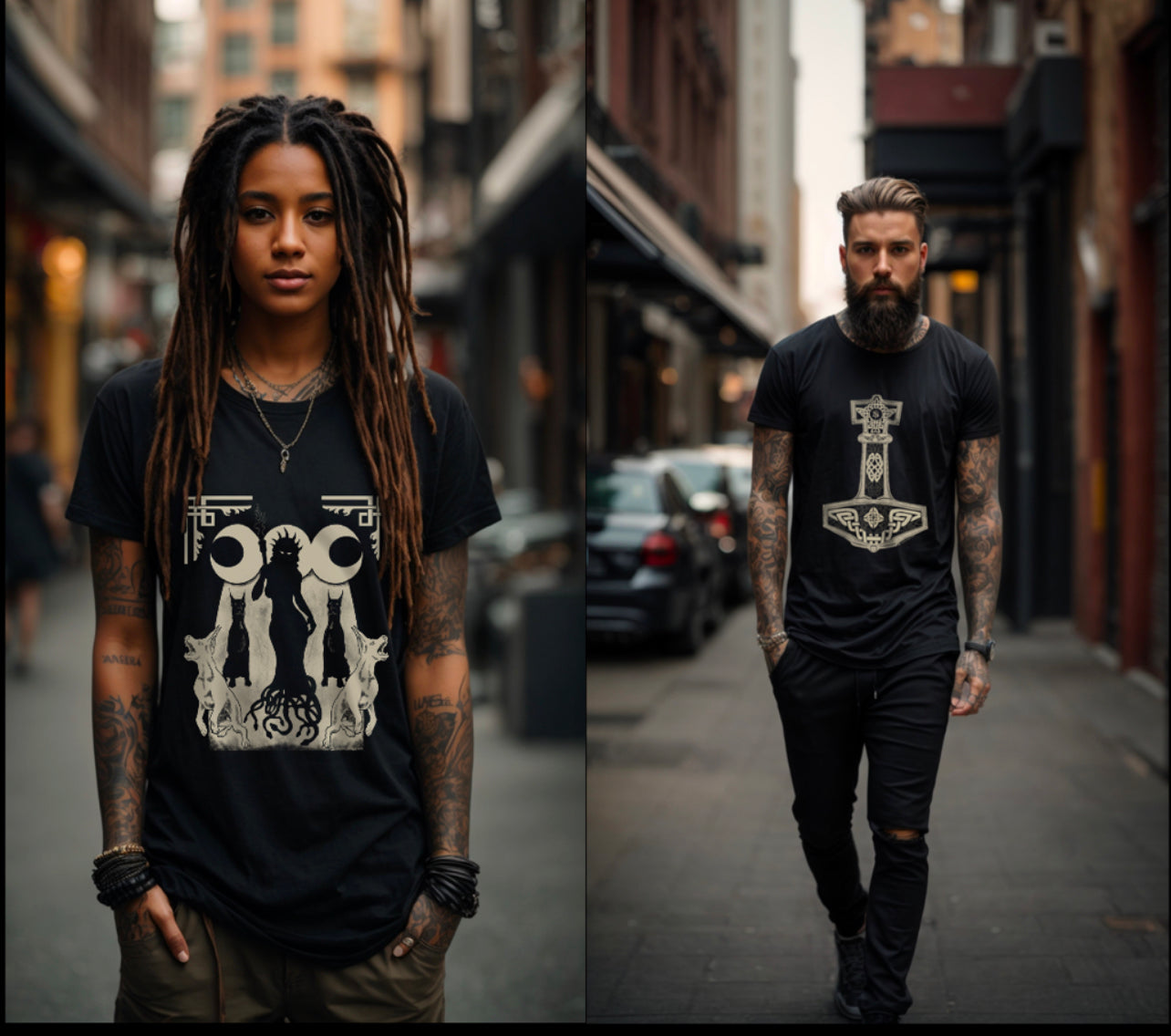Who Are Sköll and Hati?
In the rich tapestry of Norse mythology, Sköll and Hati are two prominent wolves known for their relentless pursuit of celestial bodies. These wolves are often depicted chasing the sun (Sól) and the moon (Máni) across the sky. Their chase is not merely a cosmic game of tag but a significant part of the mythological narrative leading up to Ragnarök, the end of the world in Norse mythology.
What Do Sköll and Hati Represent?
Sköll and Hati symbolize the inevitable cycle of day and night, as well as the concept of time itself. Their perpetual chase is a metaphor for the constant movement of the cosmos, reflecting the Norse understanding of time and existence. Additionally, they embody chaos and the destructive forces that exist within the universe, contrasting with the order maintained by the gods.
Who Are Sköll and Hati’s Parents?
The parentage of Sköll and Hati ties them to some of the most fearsome creatures in Norse mythology. They are widely believed to be the offspring of Fenrir, the monstrous wolf destined to kill Odin during Ragnarök, and an unnamed giantess from the Ironwood (Járnviðr) forest. Some sources suggest their mother could be Angrboda, a giantess known for birthing other monstrous children with Loki.
Who Is Sköll and Hati’s Mother/Father?
The father of Sköll and Hati is Fenrir, a central figure in Norse myth known for his strength and ferocity. Their mother is less clearly identified, though she is believed to be a giantess residing in the Ironwood. Angrboda, Fenrir’s known consort and mother of his other children, is a strong candidate for their mother.
Are Sköll and Hati Twins?
While the myths do not explicitly label Sköll and Hati as twins, their simultaneous birth and shared purpose suggest a twin-like relationship. They are often treated as a pair in mythological texts, indicating their close bond and common destiny.
Are Sköll and Hati Gods?
Sköll and Hati are not considered gods within Norse mythology. Instead, they are monstrous beings with a significant role in the cosmic order. They are part of the jötunn lineage, a race of giants often in opposition to the gods (Æsir and Vanir). Their existence and actions, however, deeply influence the mythological world and its eventual destruction.
How Do Sköll and Hati Die?
Sköll and Hati meet their fate during Ragnarök. As the final battle ensues, they successfully catch and devour the sun and moon, contributing to the world’s destruction. Their own deaths are implied as part of the widespread chaos and rebirth that follows Ragnarök, although specific details of their demise are not extensively documented in surviving texts.
How to Pronounce Sköll and Hati
The names Sköll and Hati are pronounced with a Nordic accent. Sköll is pronounced “SKOHL,” with a long ‘o’ sound. Hati is pronounced “HAH-tee,” with emphasis on the first syllable. Understanding the pronunciation helps in appreciating the phonetic beauty of the Old Norse language.
What Happens to Sköll and Hati After Ragnarök?
After Ragnarök, the fate of Sköll and Hati aligns with the general destruction and renewal theme of the event. They fulfill their role by devouring the sun and moon, leading to the world’s end. Post-Ragnarök, a new world emerges from the remnants of the old, though the specific details of Sköll and Hati’s afterlife are not detailed in the myths.
What Color Are Sköll and Hati?
The color of Sköll and Hati is not explicitly described in the myths. However, artistic depictions and symbolic interpretations often portray them as dark or shadowy figures, fitting their roles as harbingers of chaos and pursuers of celestial bodies. Their dark coloration symbolizes their connection to the ominous and destructive forces in the mythological narrative.
Where Do Sköll and Hati Live?
Sköll and Hati are said to dwell in the vast expanse of the sky, constantly chasing their celestial prey. Their home is not a specific location but rather the boundless firmament where they perform their eternal chase, symbolizing their pervasive presence in the cosmic order.
Which One Is Sköll and Hati?
There is some debate among scholars and mythologists about which wolf chases which celestial body. According to Snorri Sturluson’s Prose Edda, Sköll chases the sun and Hati chases the moon. However, the Poetic Edda suggests the opposite: Sköll chases the moon, and Hati chases the sun. This ambiguity highlights the complexities and variations within Norse mythological sources.
Are Sköll and Hati Evil?
Labeling Sköll and Hati as evil oversimplifies their role in Norse mythology. While they are associated with chaos and destruction, these elements are essential for the cyclical nature of the cosmos in Norse belief. They represent necessary forces that contribute to the balance and eventual renewal of the world.
Are Sköll and Hati Male and Female?
The myths predominantly refer to Sköll and Hati as male wolves. Their actions and descriptions in the texts align with traditionally masculine attributes in Norse culture. There are no significant references to them being female or exhibiting female traits in the surviving mythological sources.
Conclusion
Sköll and Hati are fascinating figures within Norse mythology, embodying themes of chaos, destruction, and cosmic cycles. Their relentless chase of the sun and moon symbolizes the passage of time and the inevitable forces of nature. While they are not gods, their role in the mythological narrative is crucial, culminating in the apocalyptic events of Ragnarök. Understanding Sköll and Hati offers deeper insights into the Norse worldview and the intricate tapestry of their myths.
Heathen Collection
Sköll and Hati T-shirt
Regular price
From $28.00 USD
Regular price
Sale price
From $28.00 USD
Unit price
per

Share your passion for Heathenism everywhere you go and join the Horde today!

